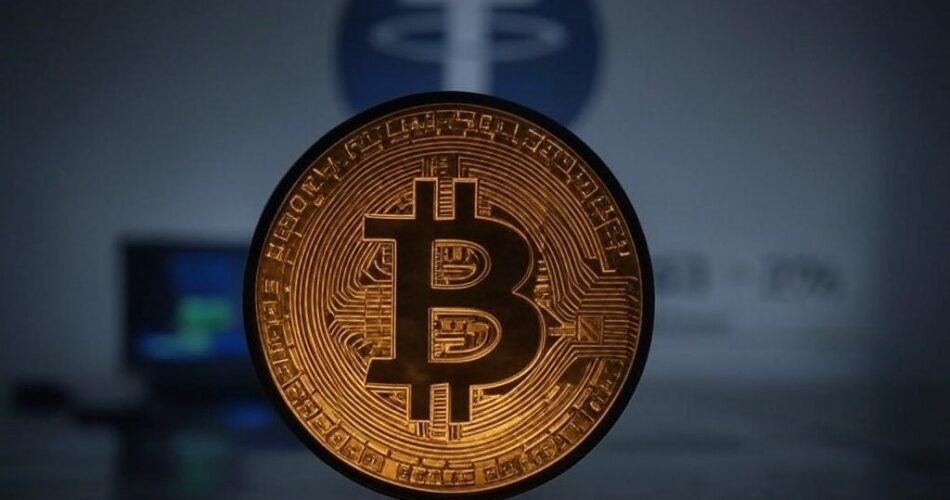Bitcoin has taken a nosedive, dropping over 22% and officially entering bear market territory. If you’re wondering what’s behind this crash, one key factor is making waves: the U.S. government’s tightening grip on stable coin regulations, with a bullseye on Tether (USDT). But is this the full story—or just part of a bigger puzzle? Let’s break it down.
The Stable Coin Crackdown: Tether in the Cross-hairs
The U.S. government is indeed ramping up scrutiny on stable coins, and Tether—a major player in the crypto ecosystem—is at the center of the storm. For years, Tether has faced questions about its operations. It’s supposed to maintain a 1:1 peg with the U.S. dollar, meaning every USDT in circulation should be backed by an equivalent amount of real dollars. Critics, however, allege that Tether has been less than transparent about its reserves, fueling rumors that it’s “printing” USDT without proper backing.
Now, with regulators circling, the market is jittery. The experts claim that Tether is “running a scam” aligns with these concerns, but it’s worth noting that no definitive proof of outright fraud has been confirmed by authorities—yet. Still, the threat of a crackdown is enough to spook investors, contributing to Bitcoin’s recent plunge.
Tether and Bitcoin: A Fragile Connection?
Here’s where things get spicy. Some experts assert that 85-95% of all Bitcoin buy volume is fake, driven by Tether allegedly pumping unbacked USDT into BTC to artificially inflate its price. This is a bold accusation—and one that’s floated around crypto circles for years. If true, it would suggest that much of Bitcoin’s value has been propped up by manipulation, not organic demand.
While some studies and investigations—like those from 2019 suggesting Tether influenced Bitcoin’s 2017 bull run—lend credence to this theory, the 85-95% figure is speculative and lacks hard evidence. Bitcoin’s price is driven by a complex mix of factors: investor sentiment, macroeconomic trends, adoption rates, and yes, stable coin activity. Tether plays a big role—USDT is widely used as a trading pair—but pinning nearly all of Bitcoin’s buy volume on it stretches the narrative.
The “Largest Fraud in History” Claim
Experts call this alleged Tether-Bitcoin scheme “the largest fraud in history.” That’s a dramatic statement, and it’s not entirely baseless to see why they’d think so. If Tether were proven to be a house of cards, the ripple effects across crypto could be massive. Trillions in market value could vanish overnight. But fraud on this scale would require coordinated deception at levels we haven’t fully seen substantiated. For now, it’s a theory—one that regulators are sniffing around, but not yet a closed case.
Bitcoin Maxis and the Strategic Reserve Dream
Bitcoin “maxis”—those die-hard believers who see BTC as the future of finance—have been pushing a narrative that it could become a “strategic reserve” asset, akin to digital gold held by governments. The analyst dismisses this as a “fake idea” that “never happened,” and they’re not entirely wrong. Despite hype from some corners (like proposals from crypto-friendly politicians), no major economy has adopted Bitcoin as a reserve asset. This unfulfilled promise has left Bitcoin vulnerable, especially as regulatory pressures mount.
Could Bitcoin Drop Below $10K?
Some experts predict that if Tether collapses under regulatory weight, Bitcoin could “easily drop below $10K again.” Is this realistic? Let’s unpack it:
- Historical Context: Bitcoin last dipped below $10K in 2020, before its meteoric rise to nearly $69K in 2021. A return to that level would mean shedding over 80% of its current value (assuming a price around $50K post-22% drop).
- Tether’s Impact: If Tether were shut down or severely restricted, the loss of USDT liquidity could tank demand for Bitcoin, especially in markets where it’s a dominant trading pair. Panic selling could follow.
- Other Factors: A Tether implosion wouldn’t happen in a vacuum. Global economic conditions, interest rates, and investor confidence would also shape Bitcoin’s fate.
While a drop below $10K isn’t impossible, it’s speculative. Bitcoin’s resilience has surprised skeptics before, and its decentralized nature means it’s not wholly dependent on Tether. Still, the risk is real—and the experts warning isn’t just fear mongering; it’s a plausible “what if.”
The Bigger Picture
Bitcoin’s plummeting price—down over 22% and now in a bear market— isn’t solely Tether’s fault. Regulatory pressures are a piece of the puzzle, but so are broader market dynamics. Crypto is notoriously volatile, and bear markets aren’t new. The analysts focus on Tether highlights a genuine vulnerability, but their claims about fake volume and an imminent collapse should be taken with a grain of salt. Evidence matters, and we’re still piecing it together.
For now, Bitcoin’s fate hangs in the balance. Whether it’s “plummeting like a rock” due to a Tether reckoning or simply weathering a storm, one thing’s clear: the crypto market’s wild ride is far from over. Keep your eyes peeled—and your skepticism sharp.
